Membrane Technology For Water: Microfiltration, Ultrafiltration, Nanofiltration, And Reverse Osmosis
Membrane Technology For Water Microfiltration, Ultrafiltration, Nanofiltration, And Reverse Osmosis
Source: https://www.elsevier.com
Prepared By: AG Fane, CY Tang, and R Wang
Usually dispatched in 2 to 3 days
Usually dispatched in 2 to 3 days
Category:
Water Desalination & RO
Only logged in customers who have purchased this product may leave a review.
Related products
Desalination & Water Purification Technologies
Introduction:
The world’s water consumption rate is doubling every 20 years, outpacing by two times the rate of population growth. The availability of good quality water is on the decline and water demand is on the rise. Worldwide availability of fresh water for industrial needs and human consumption is limited.
Various industrial and developmental activities in recent times have resulted in increasing the pollution level and deteriorating the water quality. Water shortages and unreliable water quality are considered major obstacles to achieve sustainable development and improvement in the quality of life. The water
demand in the country is increasing fast due to progressive increase in the demand of water for irrigation, rapid industrialization, and population growth and improving life standards. The existing water resources are diminishing (i) due to unequal distribution of rain water and occasional drought, (ii) excessive exploitation of ground water sources and its insufficient recharge, (iii) deterioration of water quality due to the discharge of domestic and industrial effluents without adequate treatment. This is resulting into water stress/ scarcity. Country is currently passing through social and economic transition.
The proportion of the population which is urban has doubled over the last thirty years (and is now about 30%), agriculture now accounts for about 25% of GDP and the economy has been growing at around 7-9% a year. Country has a highly seasonal pattern of rainfall, with 50% of precipitation falling
in just 15 days and over 90% of river flows in just four months
Desalination & Water Purification Technologies
Introduction:
The world’s water consumption rate is doubling every 20 years, outpacing by two times the rate of population growth. The availability of good quality water is on the decline and water demand is on the rise. Worldwide availability of fresh water for industrial needs and human consumption is limited.
Various industrial and developmental activities in recent times have resulted in increasing the pollution level and deteriorating the water quality. Water shortages and unreliable water quality are considered major obstacles to achieve sustainable development and improvement in the quality of life. The water
demand in the country is increasing fast due to progressive increase in the demand of water for irrigation, rapid industrialization, and population growth and improving life standards. The existing water resources are diminishing (i) due to unequal distribution of rain water and occasional drought, (ii) excessive exploitation of ground water sources and its insufficient recharge, (iii) deterioration of water quality due to the discharge of domestic and industrial effluents without adequate treatment. This is resulting into water stress/ scarcity. Country is currently passing through social and economic transition.
The proportion of the population which is urban has doubled over the last thirty years (and is now about 30%), agriculture now accounts for about 25% of GDP and the economy has been growing at around 7-9% a year. Country has a highly seasonal pattern of rainfall, with 50% of precipitation falling
in just 15 days and over 90% of river flows in just four months
Chemical Cleaning Effects On Properties And Separation Efciency Of An RO Membrane
Abstract: This study aims to investigate the impacts of chemical cleaning on the performance of a reverse osmosis
membrane. Chemicals used for simulating membrane cleaning include a surfactant (sodium dodecyl sulfate, SDS), a
chelating agent (ethylenediaminetetraacetic acid, EDTA), and two proprietary cleaning formulations namely MC3
and MC11. The impact of sequential exposure to multiple membrane cleaning solutions was also examined. Water
permeability and the rejection of boron and sodium were investigated under various water fluxes, temperatures and
feedwater pH. Changes in the membrane performance were systematically explained based on the changes in the
charge density, hydrophobicity and chemical structure of the membrane surface. The experimental results show that
membrane cleaning can significantly alter the hydrophobicity and water permeability of the membrane; however, its
impacts on the rejections of boron and sodium are marginal. Although the presence of surfactant or chelating agent
may cause decreases in the rejection, solution pH is the key factor responsible for the loss of membrane separation
and changes in the surface properties. The impact of solution pH on the water permeability can be reversed by
applying a subsequent cleaning with the opposite pH condition. Nevertheless, the impacts of solution pH on boron
and sodium rejections are irreversible in most cases
Chemical Cleaning Effects On Properties And Separation Efciency Of An RO Membrane
Abstract: This study aims to investigate the impacts of chemical cleaning on the performance of a reverse osmosis
membrane. Chemicals used for simulating membrane cleaning include a surfactant (sodium dodecyl sulfate, SDS), a
chelating agent (ethylenediaminetetraacetic acid, EDTA), and two proprietary cleaning formulations namely MC3
and MC11. The impact of sequential exposure to multiple membrane cleaning solutions was also examined. Water
permeability and the rejection of boron and sodium were investigated under various water fluxes, temperatures and
feedwater pH. Changes in the membrane performance were systematically explained based on the changes in the
charge density, hydrophobicity and chemical structure of the membrane surface. The experimental results show that
membrane cleaning can significantly alter the hydrophobicity and water permeability of the membrane; however, its
impacts on the rejections of boron and sodium are marginal. Although the presence of surfactant or chelating agent
may cause decreases in the rejection, solution pH is the key factor responsible for the loss of membrane separation
and changes in the surface properties. The impact of solution pH on the water permeability can be reversed by
applying a subsequent cleaning with the opposite pH condition. Nevertheless, the impacts of solution pH on boron
and sodium rejections are irreversible in most cases
Desalination as an Alternative to Alleviate Water Scarcity and a Climate Change Adaptation Option in the MENA Region
This report has been prepared by Dr. Jauad El Kharraz at MEDRC with the support of Eng. Ayisha Al-Hinaai, Eng. Riadh Dridi, Ms. Elsa Andrews, Ms. Jackie Allison, and Eng. Georges Geha. This study was peer reviewed by three international experts. We would like to thank them for their reviewing work
Desalination as an Alternative to Alleviate Water Scarcity and a Climate Change Adaptation Option in the MENA Region
This report has been prepared by Dr. Jauad El Kharraz at MEDRC with the support of Eng. Ayisha Al-Hinaai, Eng. Riadh Dridi, Ms. Elsa Andrews, Ms. Jackie Allison, and Eng. Georges Geha. This study was peer reviewed by three international experts. We would like to thank them for their reviewing work
Desalination: A National Perspective
NOTICE:
The project that is the subject of this report was approved by the Governing Board of the National Research Council, whose members are drawn from the councils of the National Academy of Sciences, the National Academy of Engineering, and the Institute of Medicine. The members of the panel responsible for the report were chosen for their special competences and with regard for appropriate balance.
Support for this study was provided by the U.S. Bureau of Reclamation under Grant No. 06CS811198. Any opinions, findings, conclusions, or recommendations expressed in this publication are those of the author(s) and do not necessarily reflect the views of the organizations or agencies that provided
support for the project.
Desalination: A National Perspective
NOTICE:
The project that is the subject of this report was approved by the Governing Board of the National Research Council, whose members are drawn from the councils of the National Academy of Sciences, the National Academy of Engineering, and the Institute of Medicine. The members of the panel responsible for the report were chosen for their special competences and with regard for appropriate balance.
Support for this study was provided by the U.S. Bureau of Reclamation under Grant No. 06CS811198. Any opinions, findings, conclusions, or recommendations expressed in this publication are those of the author(s) and do not necessarily reflect the views of the organizations or agencies that provided
support for the project.
Database Of Permitting Practices For Seawater Desalination Concentrate
Abstract:
The purpose of this research project was to identify the discharge information that permitting agencies need and the decision-making process they go through to permit discharge methods in order to help desalination project proponents focus and expedite their permitting efforts.
The project documented seawater reverse osmosis (SWRO) discharge regulatory issues and provided a critical overview of facility discharge-related information required for permitting desalination projects in the United States and selected countries with advanced environmental regulations and experience in implementing seawater desalination projects. Information was gathered from the three key U.S. states (California, Florida, Texas) where interest in SWRO desalination has been highest. Due to the more extensive international experience with SWRO desalination, information was also obtained from the countries of Australia, Israel, and Spain – all countries of significant recent large-scale SWRO desalination projects. Case studies of 11 SWRO plants and analysis of regulatory systems and permitting processes supported detailed definition of the decision-making process to set discharge permit limits, as well as defining environmental and other regulatory issues associated with concentrate regulation.
Database Of Permitting Practices For Seawater Desalination Concentrate
Abstract:
The purpose of this research project was to identify the discharge information that permitting agencies need and the decision-making process they go through to permit discharge methods in order to help desalination project proponents focus and expedite their permitting efforts.
The project documented seawater reverse osmosis (SWRO) discharge regulatory issues and provided a critical overview of facility discharge-related information required for permitting desalination projects in the United States and selected countries with advanced environmental regulations and experience in implementing seawater desalination projects. Information was gathered from the three key U.S. states (California, Florida, Texas) where interest in SWRO desalination has been highest. Due to the more extensive international experience with SWRO desalination, information was also obtained from the countries of Australia, Israel, and Spain – all countries of significant recent large-scale SWRO desalination projects. Case studies of 11 SWRO plants and analysis of regulatory systems and permitting processes supported detailed definition of the decision-making process to set discharge permit limits, as well as defining environmental and other regulatory issues associated with concentrate regulation.
Assessment Of Best Available Technologies For Desalination In Rural/Local Areas
Introduction: The Sustainable Water Integrated Management (SWIM) is a European Union(EU)-funded Regional Technical
Assistance Program [1] that “aims at supporting water governance and mainstreaming by promoting sustainable
and equitable water resources management to become a prominent feature of national development policies and
strategies (agriculture, industry, tourism, etc).” [2]
Countries in the south of the Mediterranean are facing increasing water scarcity. This scarcity is driving the need
for augmenting conventional water supply with alternative water sources. Rural and remote areas are particularly
disadvantaged because such areas are often located far away from municipal water supply systems and
conventional water sources, and are often not connected to the electric power grid. There is good potential for
addressing the water scarcity problem in rural and remote areas through sustainable saline water desalination
technologies. Seawater and brackish water desalination are well-established industries comprising a wide variety
of available technologies with decades of accumulated experience. There are many advancements and evolution in
desalination technologies. The numerous technologies and processes available have different characteristics,
advantages and disadvantages that make each suitable for particular market segments or specific niches.
Moreover, much of the cumulative technology experience is related to large urban supply plants that are either
connected to the grid, or are themselves part of large power and desalination cogeneration plants. Rural and
remote areas have special requirements that influence the appropriate selection of technologies. These include
technical requirements related to small-scale application using renewable energy sources, ease of operation and
maintenance, and simple design; requirements dictated by geographical location; as well as socio-economic and
socio-cultural requirements related to the communities that are intended to operate and benefit from the
technology. Successful implementation and long term sustainability (operational and environmental sustainability)
of desalination projects for rural and remote locations requires that all the relevant requirements be identified and
addressed from the earliest stages of the project.
Assessment Of Best Available Technologies For Desalination In Rural/Local Areas
Introduction: The Sustainable Water Integrated Management (SWIM) is a European Union(EU)-funded Regional Technical
Assistance Program [1] that “aims at supporting water governance and mainstreaming by promoting sustainable
and equitable water resources management to become a prominent feature of national development policies and
strategies (agriculture, industry, tourism, etc).” [2]
Countries in the south of the Mediterranean are facing increasing water scarcity. This scarcity is driving the need
for augmenting conventional water supply with alternative water sources. Rural and remote areas are particularly
disadvantaged because such areas are often located far away from municipal water supply systems and
conventional water sources, and are often not connected to the electric power grid. There is good potential for
addressing the water scarcity problem in rural and remote areas through sustainable saline water desalination
technologies. Seawater and brackish water desalination are well-established industries comprising a wide variety
of available technologies with decades of accumulated experience. There are many advancements and evolution in
desalination technologies. The numerous technologies and processes available have different characteristics,
advantages and disadvantages that make each suitable for particular market segments or specific niches.
Moreover, much of the cumulative technology experience is related to large urban supply plants that are either
connected to the grid, or are themselves part of large power and desalination cogeneration plants. Rural and
remote areas have special requirements that influence the appropriate selection of technologies. These include
technical requirements related to small-scale application using renewable energy sources, ease of operation and
maintenance, and simple design; requirements dictated by geographical location; as well as socio-economic and
socio-cultural requirements related to the communities that are intended to operate and benefit from the
technology. Successful implementation and long term sustainability (operational and environmental sustainability)
of desalination projects for rural and remote locations requires that all the relevant requirements be identified and
addressed from the earliest stages of the project.
An Introduction To Membrane Techniques For Water Desalination
This course is adapted from the Unified Facilities Criteria of the United States government, which is in the
public domain, is authorized for unlimited distribution, and is not copyrighted.
An Introduction To Membrane Techniques For Water Desalination
This course is adapted from the Unified Facilities Criteria of the United States government, which is in the
public domain, is authorized for unlimited distribution, and is not copyrighted.
Basics of Reverse Osmosis
What is Reverse Osmosis?
Reverse Osmosis is a technology that is used to remove a large majority of contaminants from water by
pushing the water under pressure through a semi permeable membrane. This paper is aimed towards an audience that has little of no experience with Reverse Osmosis and will attempt to explain the basics
in simple terms that should leave the reader with a better overall understanding of Reverse Osmosis technology and its applications.
Basics of Reverse Osmosis
What is Reverse Osmosis?
Reverse Osmosis is a technology that is used to remove a large majority of contaminants from water by
pushing the water under pressure through a semi permeable membrane. This paper is aimed towards an audience that has little of no experience with Reverse Osmosis and will attempt to explain the basics
in simple terms that should leave the reader with a better overall understanding of Reverse Osmosis technology and its applications.
Desalination Technology Trends And CH2M HILL
Presentation Outline:
- The Growing Desalination Market
- Trends in the Technology/Virtual expo
- Thermal Desalination
Desalination Technology Trends And CH2M HILL
Presentation Outline:
- The Growing Desalination Market
- Trends in the Technology/Virtual expo
- Thermal Desalination


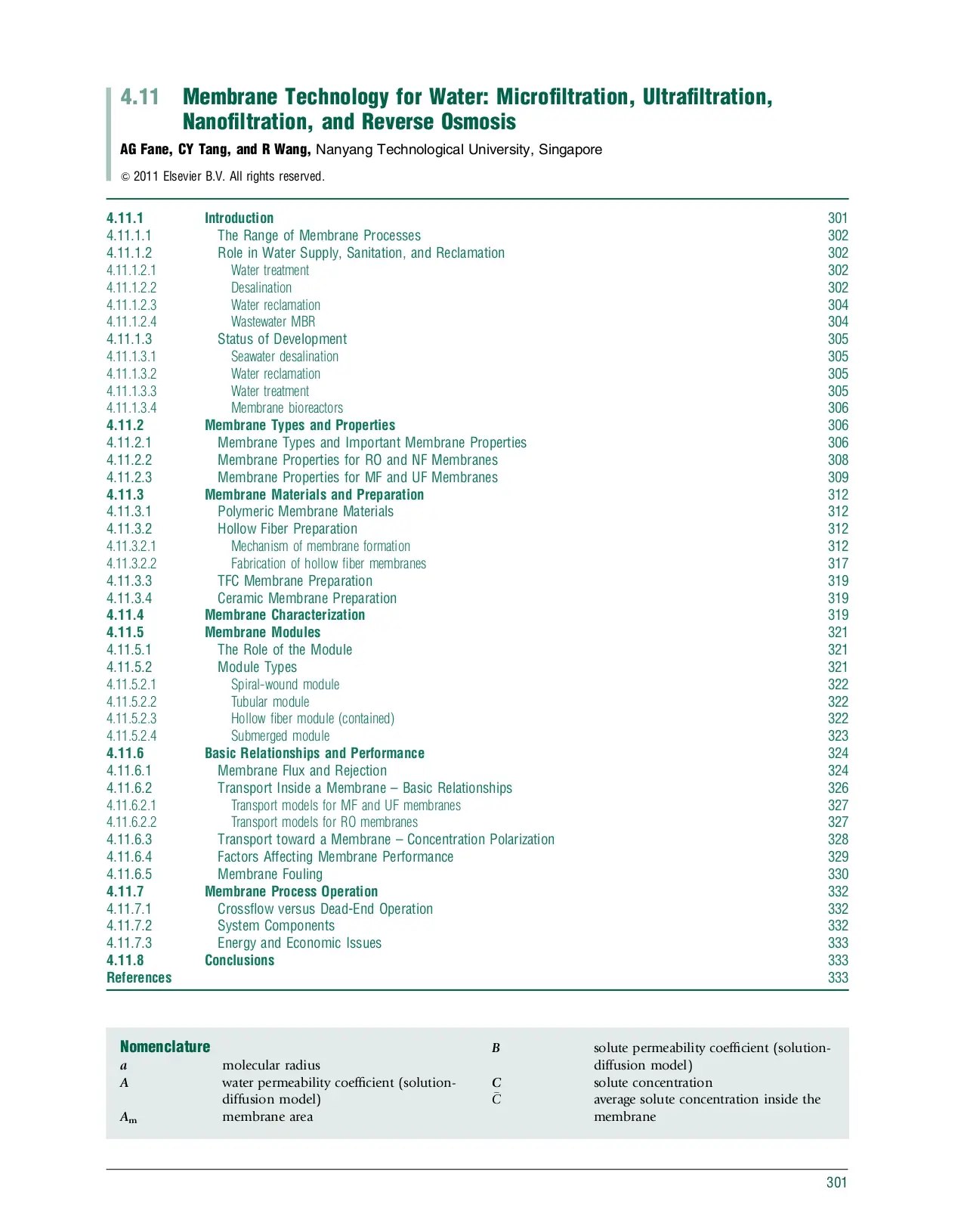
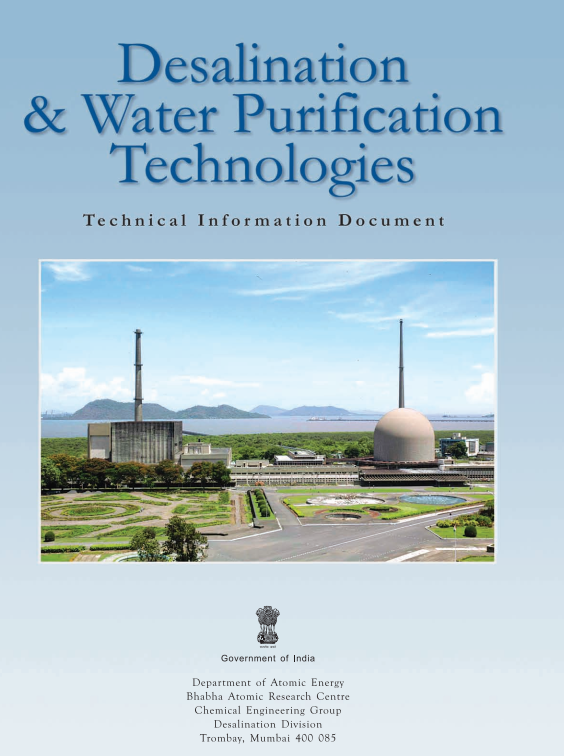
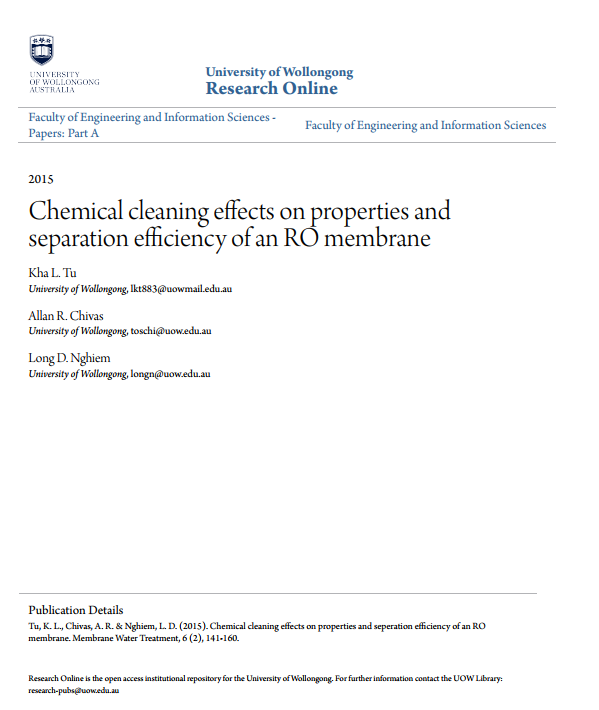

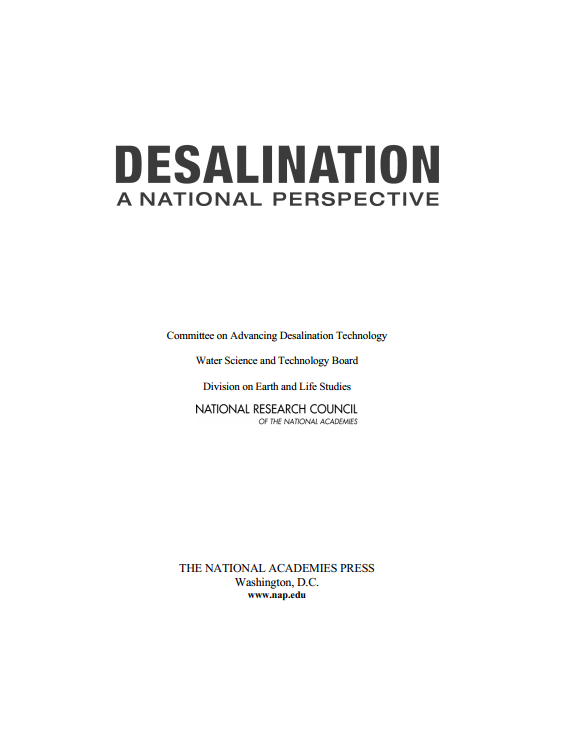
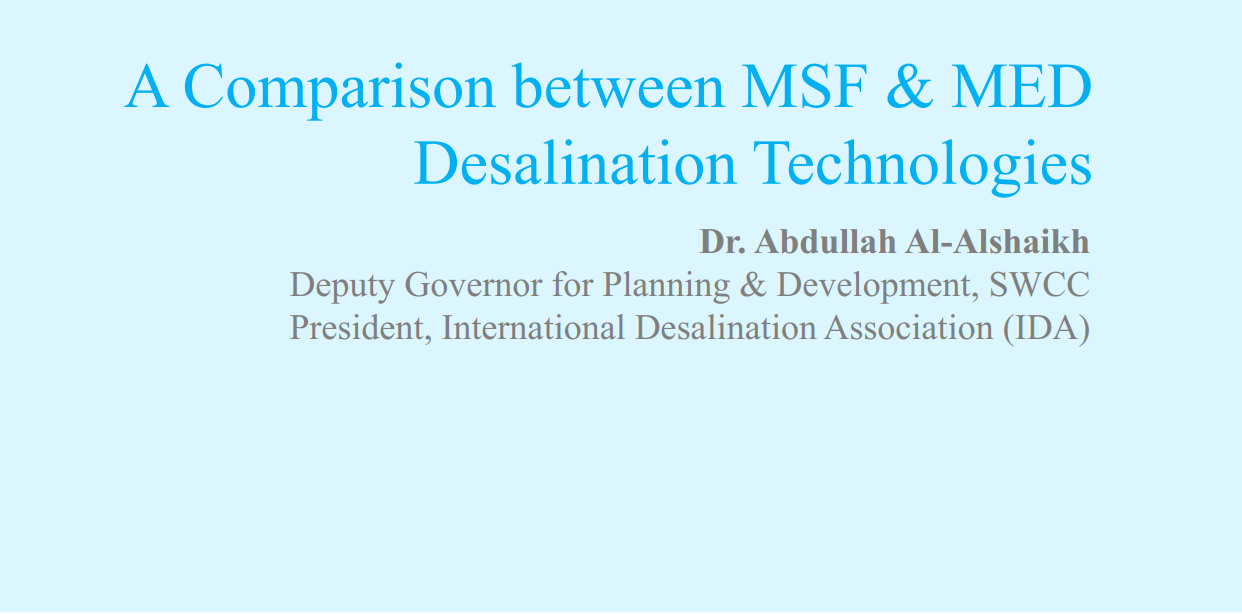
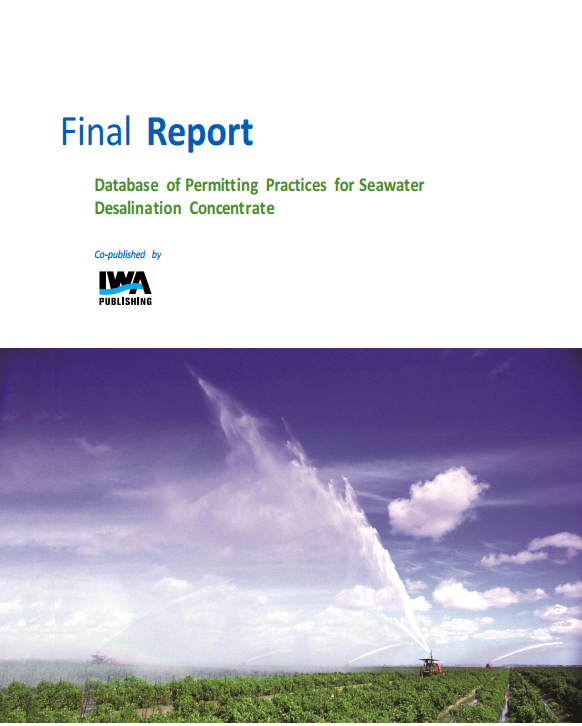

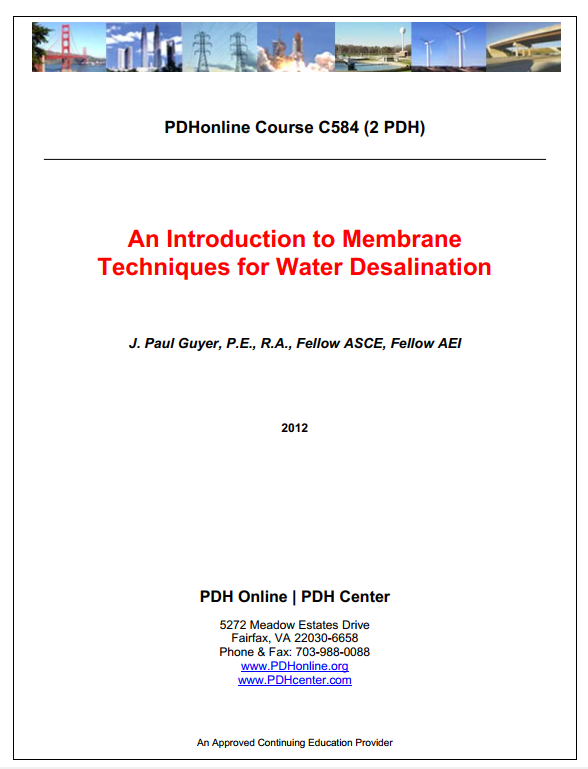
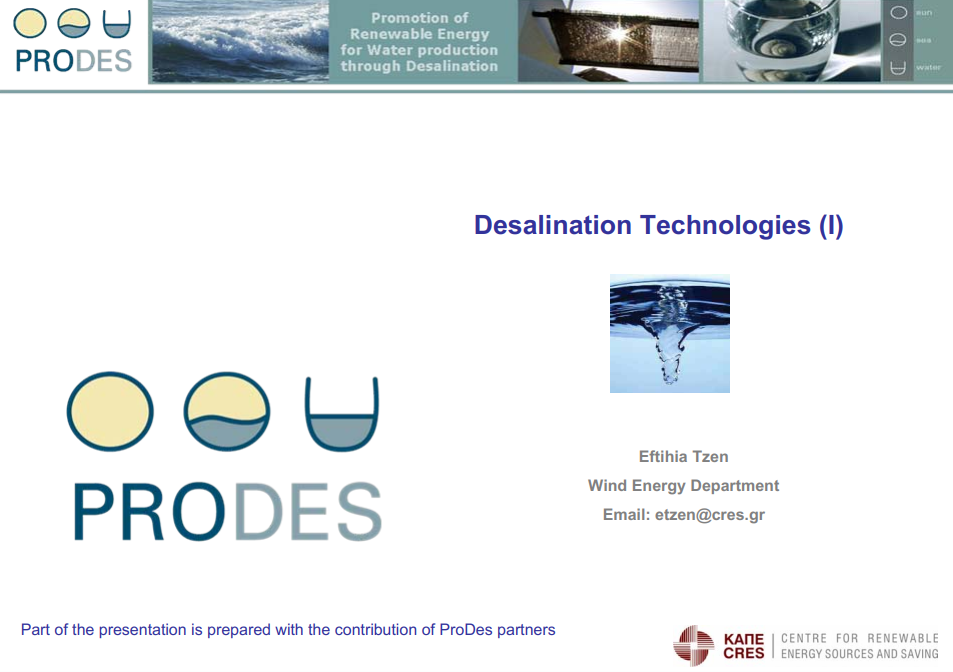
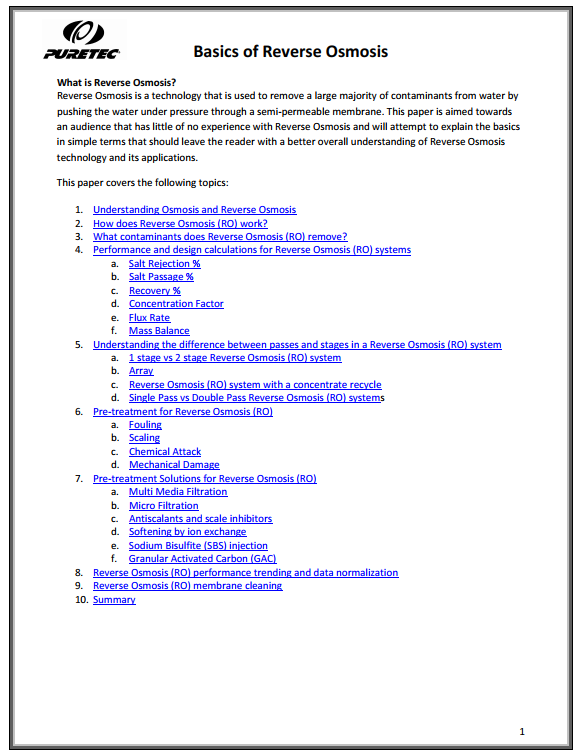
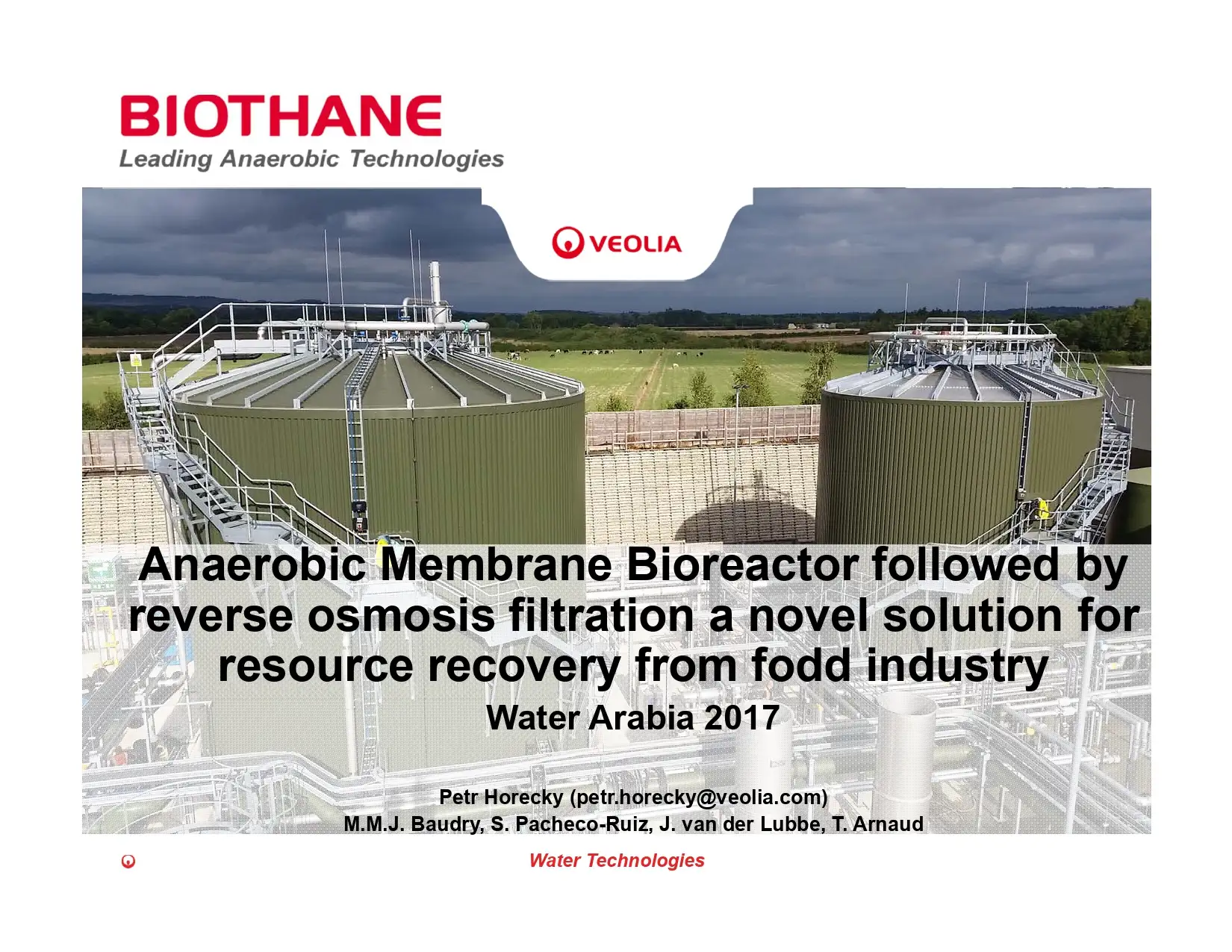

Reviews
There are no reviews yet.